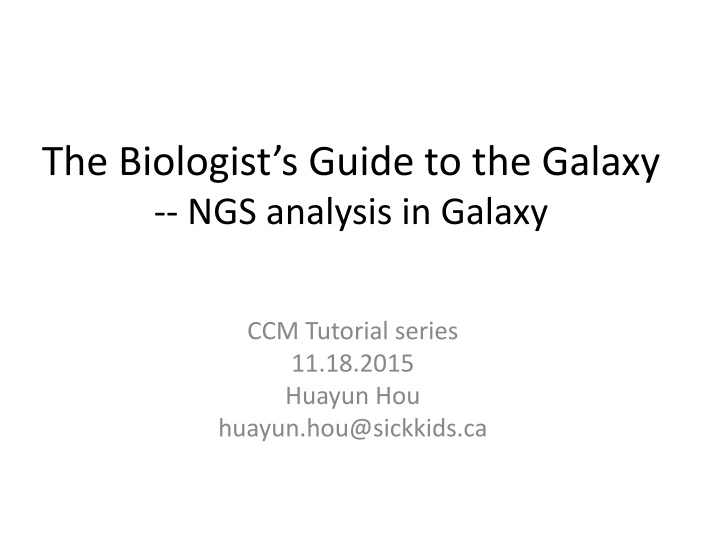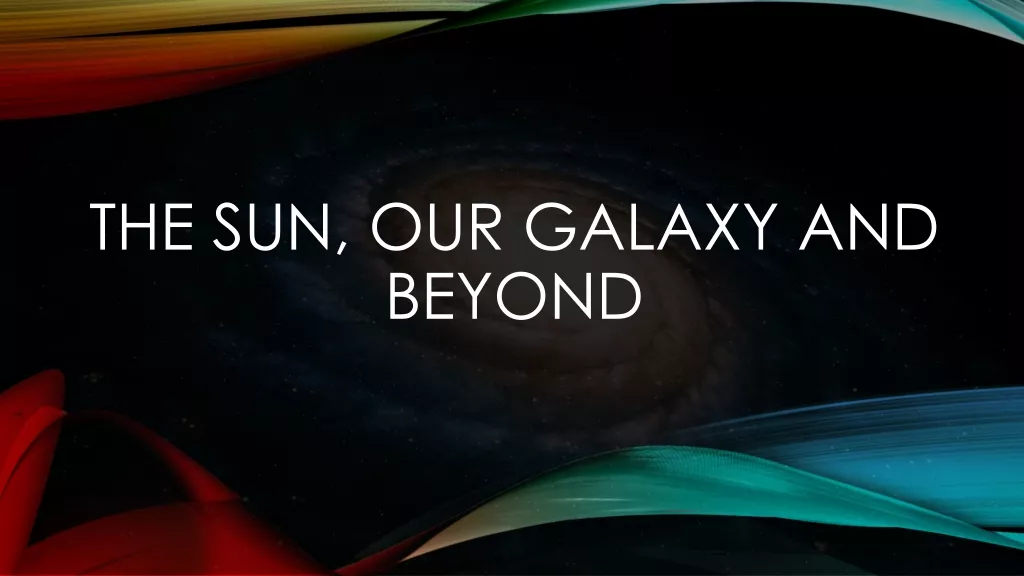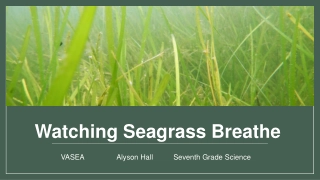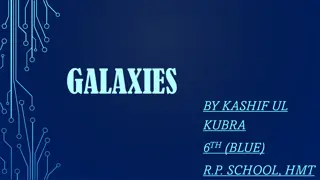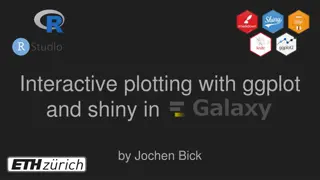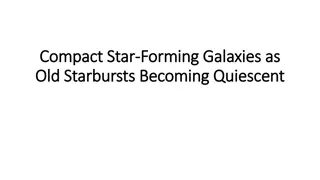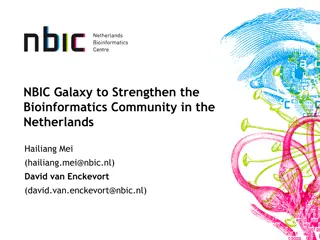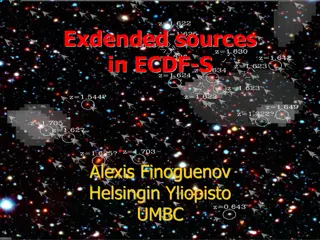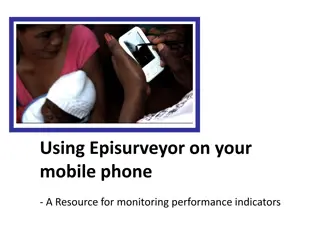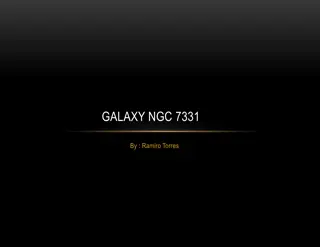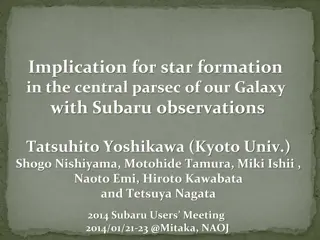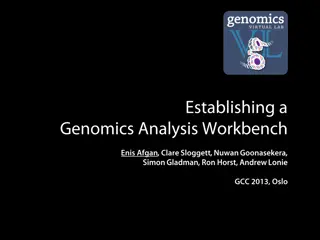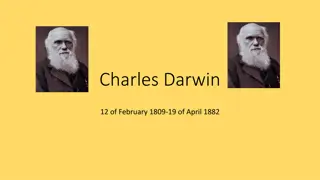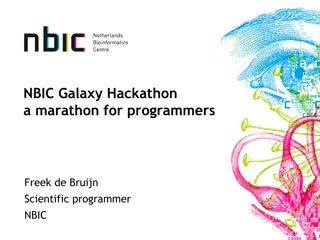The Biologist’s Guide to the Galaxy
Galaxy is a web-based platform for biomedical research offering NGS analysis tools and pipelines, data manipulation, and sharing capabilities. Explore Galaxy's features like workflow management, history tracking, and page sharing. Learn more about Galaxy's free, open-source nature and find out how it facilitates reproducible and transparent computational research. Dive into Galaxy tutorials and discover its different instances and tools. Manage your data, histories, and analysis using Galaxy's interface. Import, manipulate, and analyze NGS data efficiently with Galaxy's diverse tools.
Download Presentation

Please find below an Image/Link to download the presentation.
The content on the website is provided AS IS for your information and personal use only. It may not be sold, licensed, or shared on other websites without obtaining consent from the author.If you encounter any issues during the download, it is possible that the publisher has removed the file from their server.
You are allowed to download the files provided on this website for personal or commercial use, subject to the condition that they are used lawfully. All files are the property of their respective owners.
The content on the website is provided AS IS for your information and personal use only. It may not be sold, licensed, or shared on other websites without obtaining consent from the author.
E N D
Presentation Transcript
The Biologists Guide to the Galaxy -- NGS analysis in Galaxy CCM Tutorial series 11.18.2015 Huayun Hou huayun.hou@sickkids.ca
Outline What is Galaxy NGS analysis on Galaxy NGS analysis tools and pipelines Text manipulation Filtering, overlapping Sharing and publish data with Galaxy Workflow, history and pages
What is Galaxy Galaxy is a free, open source, web-based platform for accessible, reproducible, and transparent computational biomedical research. Wiki: https://wiki.galaxyproject.org/ Tutorials: https://wiki.galaxyproject.org/Learn
Which Galaxy? Galaxy home: http://galaxyproject.org/ Galaxy public server: http://usegalaxy.org Galaxy on cloud: https://wiki.galaxyproject.org/CloudMan Local Galaxy instance: https://wiki.galaxyproject.org/Admin/GetGala xy Galaxy toolshed: https://toolshed.g2.bx.psu.edu/
Galaxy main web interface http://usegalaxy.org Menu bar Registering for an account greatly improves accessible features Display analysis result, file content and other information Step-wise history of analysis and job statues List of analysis tools
History Current history: your working directory or workspace Job statues Multiple histories: Documentation of previous activities Share and publish History for this tutorial: https://usegalaxy.org/u/huayun/h/ccmtutori alpublic Shared Data published histories
Manage histories Tags and annotations Steps and datasets
NGS tools in Galaxy Importing data from multiple sources QC and manipulation FASTQ reads Mapping/Alignment SAMTools and BamTools Converting format Genomic interval manipulation: intersect, join, group etc. Analysis: SNP and INDEL analysis; RNA seq analysis; ChIP-seq
Analysis overview Get data raw data in FASTQ format QC and trimming Alignment reads stored in bam format Visualization bedGraph or bigWig Peak calling (for ChIP-seq) bed format Peak filtering and overlap with gene promoters
Importing data into Galaxy Tools -> Get Data Upload File Local upload Link through URL GenomeSpace UCSC, BioMart and other online resources Import History Saved or shared Galaxy session
QC and Trimming FastQC : a quick impression on the quality of NGS data NGS: QC and manipulation -> FastQC http://www.bioinformatics.babraham.ac.uk/projects/f astqc/ FASTQ groomer : switch between quality score systems Be careful with versions Trimming or filtering : Adaptors, low quality reads, trim reads shorter Filter FASTQ (sliding window), Clip (adaptor) etc.
Alignment Aligners: Bowtie2 (short reads); Bwa (short reads); Bwa-mem (longer reads ( > 100bp)) Choose genome assembly Output format: bam file (binary version of sam files) Summary of alignment: Samtools -> idxStats and flagStat Filter bam reads : Bamtools -> filter -> MapQuality (>, =, < etc.)
Visualization Genome coverage file: bedGraph or Wiggle BEDtools: Creat a BedGraph of genome coverage BigWig: binary, quick accession Covert formats: Wig/bedGraph-to-bigWig Visualization on UCSC
ChIP-seq: Peak Calling Sequence and align to genome DNA binding protein
ChIP-seq: Peak Calling Tools -> NGS TOOLBOX BETA -> NGS: Peak Calling Tools for identifying ChIP-seq Peaks MACS Accepts multiple TAG files (Bed, BAM, etc.) Control File helps reduce technical artifacts Check genome size, tag size
Annotate the peaks Overlap gene promoters? Fetch genes from UCSC : getData -> UCSC main; select bed file as output Overlap: Operate on Genomic Intervals -> join
Workflow Galaxy workflow is an abstract representation of a multi-steps analysis A series of tools and the flow of datasets between them, without tied to any specific datasets History options -> extract workflow
Summary Galaxy: accessibility and reproducibility Limitations: For process involving multiple steps and datasets, naming is not intuitive Restricted to tools available through the main portal or toolshed Tips: Always read tool descriptions Follow published tutorials or workflows first Google is your friend!
So long, and thanks for all the attention!
